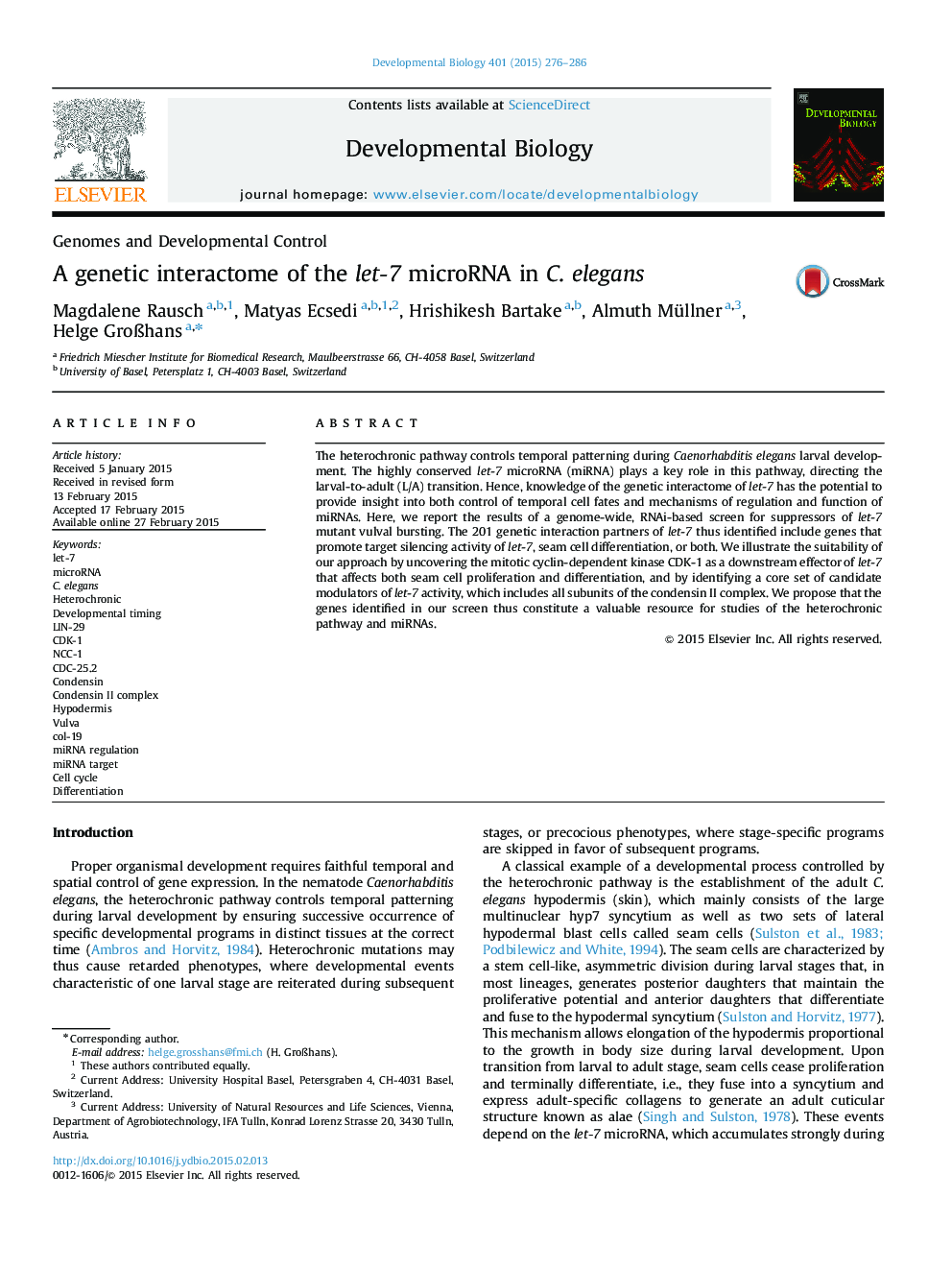| Article ID | Journal | Published Year | Pages | File Type |
|---|---|---|---|---|
| 2172864 | Developmental Biology | 2015 | 11 Pages |
•A genome-wide RNAi screen identifies suppressors of let-7 miRNA mutant lethality.•A subset of suppressors restores mutant let-7 activity on a miRNA target reporter.•Candidate miRNA pathway genes include all subunits of the condensin II complex.•A subset of suppressors can restore hypodermal cell differentiation.•let-7 regulates the mitotic cyclin-dependent kinase CDK-1 through LIN-29.
The heterochronic pathway controls temporal patterning during Caenorhabditis elegans larval development. The highly conserved let-7 microRNA (miRNA) plays a key role in this pathway, directing the larval-to-adult (L/A) transition. Hence, knowledge of the genetic interactome of let-7 has the potential to provide insight into both control of temporal cell fates and mechanisms of regulation and function of miRNAs. Here, we report the results of a genome-wide, RNAi-based screen for suppressors of let-7 mutant vulval bursting. The 201 genetic interaction partners of let-7 thus identified include genes that promote target silencing activity of let-7, seam cell differentiation, or both. We illustrate the suitability of our approach by uncovering the mitotic cyclin-dependent kinase CDK-1 as a downstream effector of let-7 that affects both seam cell proliferation and differentiation, and by identifying a core set of candidate modulators of let-7 activity, which includes all subunits of the condensin II complex. We propose that the genes identified in our screen thus constitute a valuable resource for studies of the heterochronic pathway and miRNAs.
